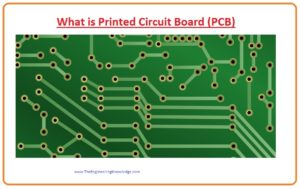 Hello friends, I hope all of you are fine. In today’s tutorial, we are gonna have a look at What is PCB (Printed Circuit Board). The PCB stands for printed circuit board, PCB is a thin chip created by compound epoxy, glass-fiber, or laminated different substances. There are many current-carrying ways are designed on the chip, which is used different components like resistor, capacitors, a transistor with each other and current flows to these components through printed ways paths.
Hello friends, I hope all of you are fine. In today’s tutorial, we are gonna have a look at What is PCB (Printed Circuit Board). The PCB stands for printed circuit board, PCB is a thin chip created by compound epoxy, glass-fiber, or laminated different substances. There are many current-carrying ways are designed on the chip, which is used different components like resistor, capacitors, a transistor with each other and current flows to these components through printed ways paths.
Pcb is used in different electronic instruments, projects or devices like mobiles, laptops, computers, etc. Nowadays almost every circuit of any device is created on the PCB. In computers all components are using in computer’s motherboard are assembled on printed circuit board. Before PCB to connect different components with each other wire wrap and one point to other point assembling were famous but these days they are no using. PCB (printed circuit board) needs further enterprise struggle to design the circuitry, but production and its construction are automatic. Special CAD (computer-aided design) software is offered printed on the board. Production of circuitries with PCB (printed circuit board) is inexpensive and quicker than with other cabling techniques, as apparatuses are riding and connect in one process. Huge quantity of PCB (printed circuit board) can be produced at the same time. PCB (printed circuit board) can also be created by hand in less amounts, with abridged assistances. In today’s post, we will have a look at its construction, uses, types, and other related terms. So let’s get started with what is PCB (Printed Circuit Board).
What is PCB (Printed Circuit Board)
- The PCB stands for printed circuit board, PCB is a thin chip created by compound epoxy, glass-fiber, or laminated different substances
- A rudimentary PCB (printed circuit board) comprises of a smooth plate of insulated substantial and a sheet of copper foil, coated to the substrate.
- Chemical engraving splits the copper into discrete conducted outlines which are named pathways or circuitry dashes.
- The body of a PCB (printed circuit board) has a covering that shields the copper from erosion and decreases the probability of soldering short circuits among dashes or not desirable electrical connection with vagrant plain lines.
- Pcb consists of numerous sheets of copper. Two coat PCB consists of copper coating layers on both sides.
- Multiple coating PCB chip has sandwich extra copper sheets among coatings of isolating substantially.
- Conductive elements of unlike sheets are linked with vias (A via or VIA is an electrical connection among sheets in a physical electronic circuitries which passes through the plane of one or more end-to-end sheets).
- When there is no components on PCB (printed circuit board) chip then it is named as printed wiring board.
- But, the term printed wiring board (PWB) has dropped into dereliction.
- A PCB (printed circuit board) which consists of a lot of components is named as printed circuit assembly, or (PCBA).
- A nominal PCB (printed circuit board) for a solitary element, which used for proto-typing, is known as a breakout board.
- The persistence of this board is to break-out the leads of an element on distinct termini so that physical contact to them can be creat effortlessly.
- Break-out chips are particularly used for superficially mounted apparatuses or any apparatuses with well-lead terrain.
History of PCB
- Beforehand the invention of PCB (printed circuit board) electric and electronic circuitries were made by joining components with wire on a framework.
- Classically, the framework was a sheet of a metallic frame.
- Different elements were connected to that framework typically by insulating material when the joining point on the framework was metallic, and their wires were associated straight or with jumper cables with solder wire, or occasionally by means of a crease connector.
- These circuitries were very huge, massive, weighty, and comparatively delicate and manufacture was employment rigorous, so the goods were very costly.
Through-Hole Technology of PCB
- Through-hole technology has totally substituted previous assemblage methods like point-to-point creation.
- It is a technique for creating electric circuitries in which elements are injected through holes bored into (PCBs).
- The ends or terminals of components are attached to the PCB chip by the soldering. This procedure is also named through-hole assemblage.
- Through-Hole skill substituted initial microchip technology assemblage methods like point-to-point creation.
- From the second generation of computers in the 1950s until surface-mount technology became popular in the late 1980s, every component on a typical PCB was a through-hole component.
Surface Mount Technology
- After 1970 the level of mechanization in the building of electric apparatus initiated to upsurge.
- The use of old-style apparatuses with primes did not evidence informally.
- Resistors ® and capacitors (C) desired to have their terminals pre-molded so that they can assemble with the hole, and ALSO ICs desired that their terminals also be in proper shape so that they can fin in a hole.
- In case of PCB, there is no requirement for the constituent leads to move through the chip.
- In its place, it is pretty satisfactory for elements to be joined straight to the chip.
- Consequently, surface mount technology (SMT) was created, and the use of SMT (surface mount technology) elements design very quickly as their benefits were perceived and realized.
- Nowadays surface mount technology (SMT) is the foremost expertise used for electronics work.
- SMT (surface mount technology) elements are capable to be completed very minor.
Types of PCB
- There are numerous types of PCB according to their use and structure assembly. Some types of PCBs are explained below.
- Single-Sided (Printed Circuit Board) PCB
- Double-Sided (Printed Circuit Board) PCB
- Multilayer (Printed Circuit Board) PCB
- Rigid (Printed Circuit Board) PCB
- Flex (Printed Circuit Board) PCB
- Rigid-Flex (Printed Circuit Board) PCB
Let’s discuss all these types one by one.
Single Sided PCB
- This single-sided printed PCB consist of only one layer of material through which it created.
- One finishing of the substrate is covered with a tinny coating of metallic, frequently copper since it is a conductor.
- This PCB (Printed Circuit Board) comprises of numerous circuitries and different electric elements on the one solitary side.
- This category of a chip is the best option for new workers on PCB it can be easily handled and soldered.
Double Sided PCB
- This type of PCB is mostly used because both sides can be used for the circuit making the process.
- On this chip, both sides can be used to make circuits through-hole and surface mounted techniques.
- A through-hole technique used jumpers smaller wires which are soldered at each end with different circuit components.
- SMT is different from through-hole, as does not use wire.
- Instead of wire, numerous tiny leads connected straightly onto the chip.
- SMT provides numerous circuits to assemble within less space on-chip, which many circuits can be created on-chip, and it has less weight.
Multilyer PCB
- This kind of PCB increases the density and complication of PCB (Printed Circuit Board) enterprises by accumulating additional sheets outside the upper and lowest coatings.
- Due do many layers onboard engineer gets the advantage to make more circuits on a different layer of PCB.
- The additional coatings used in this enterprise are control planes, which connect the circuit with the power supply but also lessening the electromagnetic interfering.
Rigid PCB
- In adding to have diverse no of coatings and sides, PCB can also be originated in varying rigidities.
- Rigid PCB uses a dense, inflexible substance such as glass-fiber which retains chip from bending.
- A motherboard within the Personal computer is an example of a rigid PCB PCB (Printed Circuit Board).
Flexible PCB
- Normally, a flexible PCB is created by an elastic-plastic.
- This vital substantial certificates the chip to fit into arrangements which an unbending chip cannot and or move through usage deprived of damaging the circuitries on the PCB.
- Flexible PCB has a lot of benefits. For example, they can reinstate weighty or massive cabling in larger gear such as satellites.
- Flex sheets are also available in single-sided, double-sided or multiple-layer arrangements.
Rigid-Flex PCB
- Rigid-flex PCB consists of both rigid and flex circuitry chip.
- An informal rigid-flex sheet contains a rigid circuitry chip that joins to a flexible circuitry chip. These chips can be further complex if the enterprise needs a mandate.
PCB Applications
- Pcb used different communications instruments like mobile, watches, radios, etc.
- All types of computers as motherboards of PCB, like personal computers, tablets, laptops, or other workstations.
- It is used in all MediaPlayer instruments like tv, DVD, and different types of games which we play.
- All appliances used in our homes are manufactured on PCB like microwave ovens, refrigerators, clocks, etc.
- Different industry machines also PCBs to assemble different electronic components.
- All types of supplies used PCB to make their structure like ups, inverters or other power devices.
- Different measurement devices like flow meters, and temperature meters all are constructed on PCB.
- PCB is also used for medical instruments like x-ray machines, ct scans, etc. You can also find PCB inside the electric optical microscope, controller schemes, compressors, and other strategies.
Related Posts
- Aluminum PCB (Printed Circuit Board)
- Multilayer PCB (Printed Circuit Board)
- Rigid PCB (Printed Circuit Board)
- Flex PCB (Printed Circuit Board)
- High Frequency PCB (Printed Circuit Board)
- Single Sided PCB (Printed Circuit Board)
- Rigid-Flex PCB (Printed Circuit Board)
- Double sided PCB (Printed Circuit Board)
So, friends, it is the detailed tutorial on PCB I have mentioned each and everything related to PCB. If you have any query ask in comments. See you in the next tutorial. Have a good day.

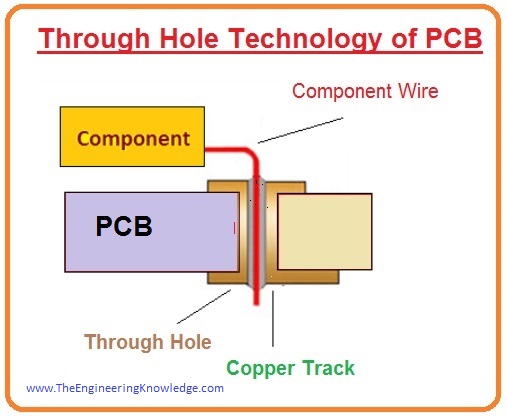
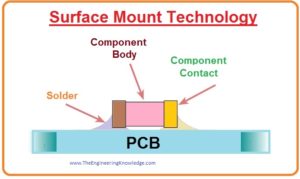
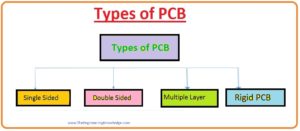
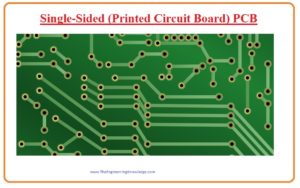
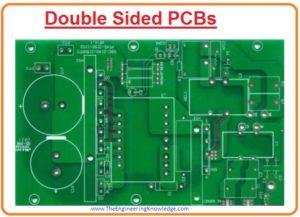
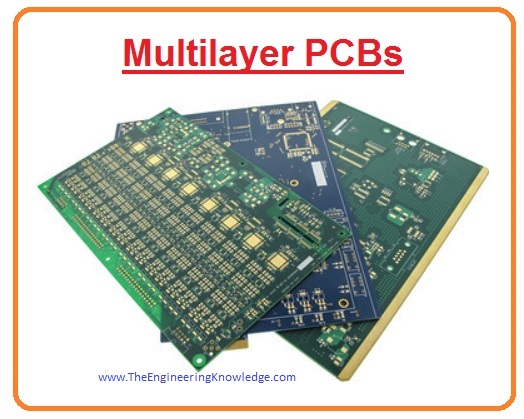
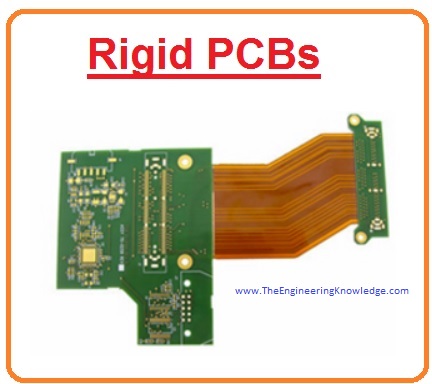
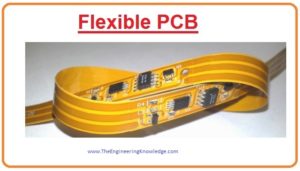
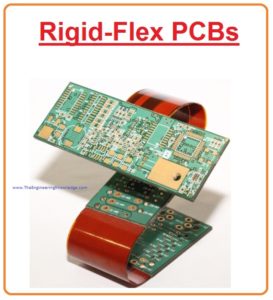




You are a very intelligent person!
This is a great blog.
Amazin!
Thanks for your personal marvelous posting! I actually enjoyed reading it, you happen to be a great author.I will ensure that I bookmark your blog and will eventually come back someday. I want to encourage yourself to continue your great work, have a nice day!
Thanks for appreciating you can also read a further post related to this I have upload many posts
Hi there, I found your web site by means of Google while searching for a similar matter, your web site got here up, it looks great. I’ve bookmarked it in my google bookmarks.
I simply had to appreciate you yet again. I do not know what I would have done in the absence of those hints revealed by you on my field. It actually was a troublesome matter in my view, but being able to see this specialized style you processed the issue took me to leap for delight. Now i am happier for this assistance and even sincerely hope you find out what a powerful job you were putting in educating people today thru your web blog. I know that you haven’t encountered any of us.
Hello! I know this is somewhat off topic but I was wondering if you knew where I could find a captcha plugin for my comment form? I’m using the same blog platform as yours and I’m having problems finding one? Thanks a lot!
I am always invstigating online for posts that can assist me. Thanks!